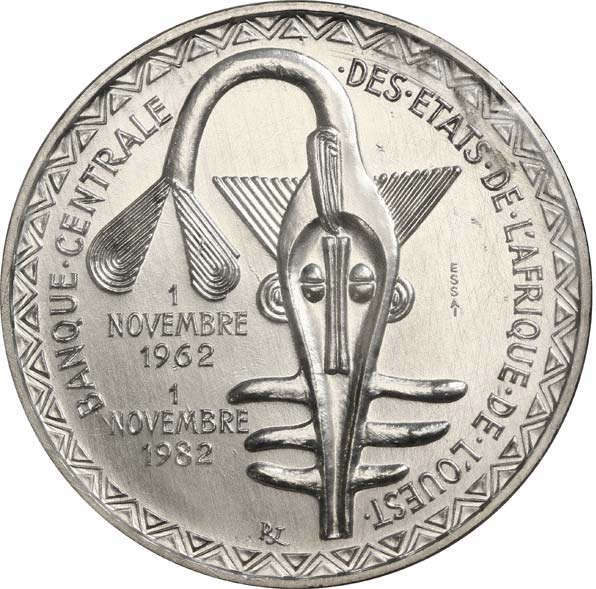The Central Bank of West African States (BCEAO) has just published, on August 1, 2025, a series of major instructions aimed at clarifying and regulating financial and commercial operations between the UEMOA countries and the rest of the world.
Among these new instructions are:
– Instruction No. 15-07-2025-RFE, specifying the procedures for producing periodic reports for the competent authorities. This measure aims to enhance the traceability of operations carried out by authorized intermediaries and ensure better control of financial flows by imposing a harmonized reporting format, a defined frequency, and strict submission deadlines.
– Instruction No. 14-07-2025-REF, setting the conditions for physical import and export by authorized intermediaries. It regulates the physical movements of currencies and other values between the UEMOA and abroad, imposing rigorous procedures for declaration, authorization, and justification.
– Instruction No. 13-07-2025, establishing the exhaustive list of documents required for operations conducted by authorized intermediaries. This provision aims to standardize documentary practices for all exchange, investment, or transfer operations, thereby strengthening regulatory compliance.
– Instruction No. 12-07-2025-RFE, regulating assets held with foreign correspondent banks outside the UEMOA. It requires credit institutions to declare and justify balances held abroad for operational or regulatory needs.
– Instruction No. 11-07-2025-RFE, establishing a mandatory prior authorization from the BCEAO for non-resident entities wishing to carry out certain financial operations in the area. This measure aims to prevent uncontrolled flows that could destabilize the local market.
– Instruction No. 10-07-2025-RFE, concerning the mandatory domiciliation of foreign direct and portfolio investments. This instruction aims to ensure the traceability of incoming flows and facilitate their monitoring in balance of payments statistics.
– Instruction No. 09-07-2025-RFE, defining the conditions for opening and managing foreign accounts for non-residents. Specific rules are provided to prevent the use of these accounts for circumventing exchange regulations.
– Instruction No. 08-07-2025-RFE, framing the repurchase of currencies by authorized sub-delegates, especially in border areas or secondary agencies, to ensure the traceability of manual exchange operations.
– Instruction No. 07-07-2025-RFE, specifying the conditions for the activities of authorized manual exchange agents. This instruction sets accreditation criteria, record-keeping obligations, and internal control rules.
– Instruction No. 06-07-2025-RFE, on foreign exchange allocations for resident and non-resident travelers. It caps amounts and requires supporting documents (flight ticket, visa, mission order, etc.) for obtaining currencies.
– Instruction No. 05-07-2025, concerning risk hedging for residents during commercial operations. It specifies the conditions for access to hedging instruments such as futures contracts or options.
– Instruction No. 04-07-2025-RFE, regulating international trading operations. It regulates the domiciliation, declaration, and clearance of triangular or offshore trading transactions.
– Instruction No. 03-07-2025-RFE, concerning the domiciliation and clearance of exports of goods and services. It imposes strict documentary compliance to ensure the effective repatriation of export revenues.
– Instruction No. 02-07-2025-RFE, relating to the domiciliation and settlement of imports of goods and services. It defines mandatory documents, clearance deadlines, and sanctions for non-compliance.
– Instruction No. 01-07-2025-RFE, regarding the general rules for executing transactions with foreign entities or non-residents. It establishes the overall compliance framework applicable to all cross-border transactions.
These instructions reflect a reinforced willingness of the BCEAO to ensure transparency and traceability of regional financial operations while protecting the integrity of the foreign exchange market in the UEMOA area.
Implications and consequences for banks and authorized financial actors
The simultaneous entry into force of these fifteen instructions represents a major regulatory turning point for commercial banks, non-bank financial institutions, exchange offices, and other authorized intermediaries in the UEMOA area.
First, the enhanced reporting, traceability, and clearance obligations introduce a significant operational burden. Institutions will need to quickly adapt their information systems, review their internal procedures, and train their teams to comply with the new requirements, especially regarding deadlines, formats, and frequency of declarations to the BCEAO.
Furthermore, the increased conditions for domiciliation and documentary justification of import-export operations, foreign investments, and cross-border flows strengthen ex ante and ex post control over currency flows. This could lengthen processing times but will help secure operations against fraud, money laundering, and capital flight risks.
For exchange offices and sub-delegates, the new rules governing currency repurchase, travel allocations, and manual exchange management make formalization of practices and improvement of traceability tools imperative. Strict compliance with limits and proof obligations becomes an essential condition for survival for these actors.
Additionally, banks operating with correspondents outside the UEMOA are now required to provide increased transparency on their foreign assets. This requirement could impact cash management and encourage institutions to streamline their network of correspondent banks.
Finally, the regulation of currency risk hedging instruments represents a significant advancement for local economic operators but requires banks to enhance their expertise in structuring and offering derivatives products in compliance with prudential standards.
Overall, these instructions impose a real revolution in practices. In the short term, actors will need to make investments to comply. In the medium term, the UEMOA financial system is expected to emerge strengthened, more transparent, more robust, and better integrated into international circuits.


